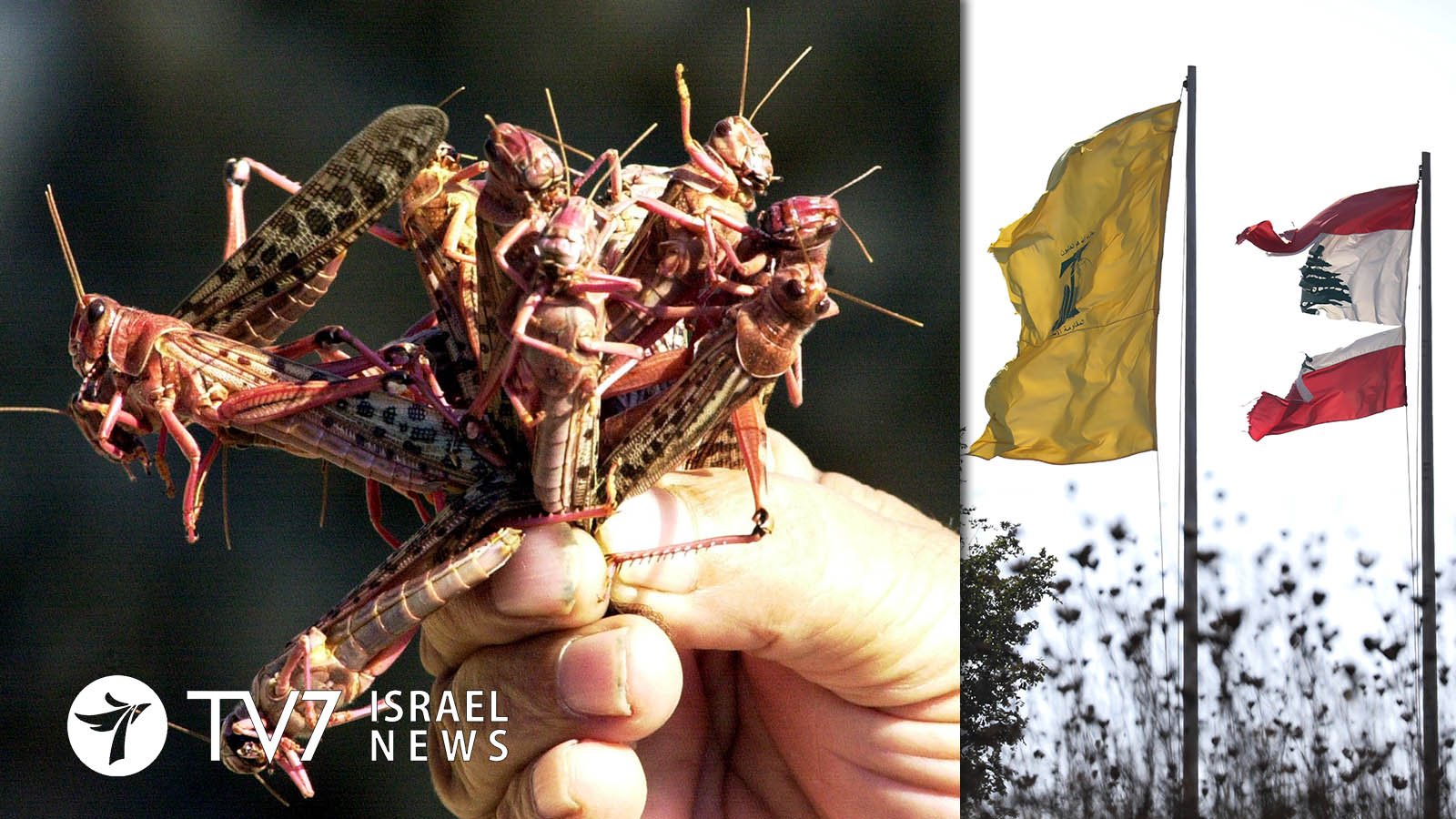Lebanon is the latest nation to be stricken with a biblical plague of locusts. Middle Eastern winds have swept several small groups of mature locusts from Syria into Lebanon’s Bekaa Valley near Aarsal and Ras Baalbek.
The Baalbek-Hermel region in the northeast has mostly livestock farming with a few cherry plantations affected by the locusts so far, whereas there is more agricultural land in southern Lebanon.
The United Nations Food and Agriculture Organization (FAO) representative in Lebanon Maurice Saade described the occurrence “very rare,” explaining that “the breeding grounds were on the Red Sea coast, Saudi Arabia’s northern coast, so they were blown in through Jordan and Syria..
The swarms first entered Lebanon on 22 April, with gusts of air returning a few back to Syria near Flitah as the winds shifted. Control operations were quickly launched in both areas, said the FAO.
Military helicopters were deployed to spray insecticide on agricultural land in northeast Lebanon to help farmers battle the swarms, and concern remains high even though so far no significant damage has been caused.
Lebanon’s Agriculture Ministry, which is on full alert, said reported yesterday that large numbers of the locusts have already been destroyed.
“We managed in little time to destroy huge numbers,” the country’s Caretaker Agriculture Minister Abbas Mortada told Reuters, because “some have escaped and there are large quantities still, mostly in the Hermel area of Marjaheen.”
The crop-threatening locusts are the latest addition to a long list of challenges faced by Lebanon, which is battling its worst financial crisis in decades.
Israel also remains on high alert against the pests.
Dr. Yoav Motro from the Israeli Ministry of Agriculture confirmed to TV7 last Thursday that very small groups of what he referred to as “swarmlets” able to be “measured in the 1000s” infiltrated the country, although the situation remained under control. The same easterly winds that swept the “mother swarm” from Saudi Arabia actually dismantled the group, he explained, adding that a positive change in wind direction then carried the them away from Israel.
Dr. Motro told TV7 that no breeding had been detected in Israel and there had not even been a need for control efforts, as the spraying would “cause more damage than the locusts themselves.” He also credited Jordanian authorities with having carried out excellent control efforts on their side of the shared border.
Early detection and extensive measures prevented a catastrophe in Jordan, said the country’s Agriculture Minister Khalid Al-Hunaifat last week. He said that “spraying and pest control procedures with mechanisms including center-pivot irrigation systems, tractor-mounted sprayers or ultra-low volume (ULV) application” had been used in the Tafilah Governorate and throughout the eastern region of the Hashemite Kingdom against swarms in the Majhood Waterfalls, Burbata and Hora areas.
While noting success in preventing further breeding or damage in “500 acres of cultivated lands” especially known for cultivation of guava and vegetables, Minister Hunaifat also acknowledged that “rugged” terrain prevented authorities from fully eliminating the entire swarm, and that the Jordanian Air Force planes would be called upon to conduct aerial spraying if necessary.
According to the latest update by the FAO’s Desert Locust Information Service (DLIS), small groups of mature adults continue to appear in Jordan, western and central areas as well as northwards into western Syria and eastern Lebanon; but that the “groups also moved in several different directions at other times due to variable winds. The infestations are limited in size and number. Small-scale control operations have been carried out in most areas.”
